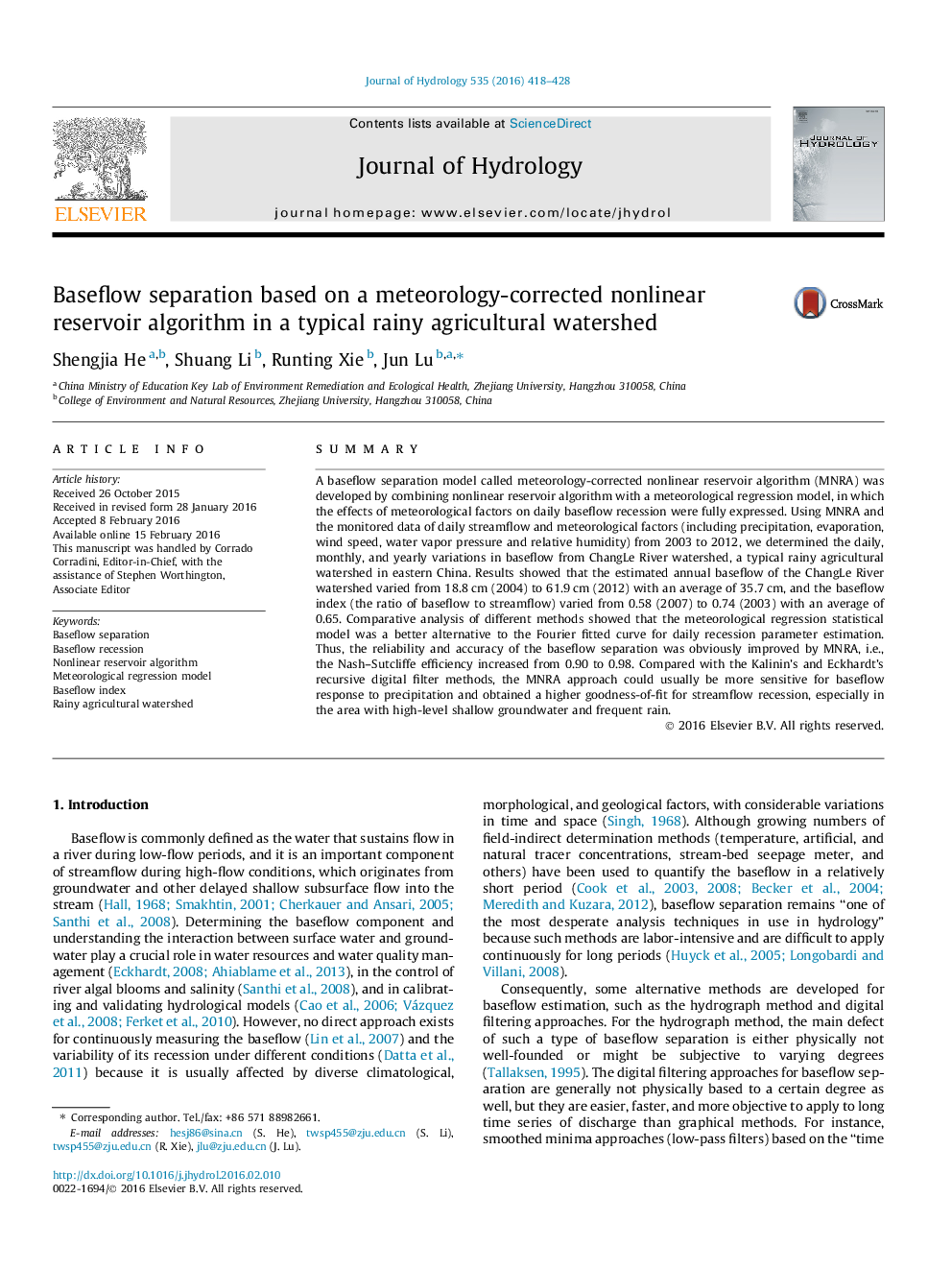| کد مقاله | کد نشریه | سال انتشار | مقاله انگلیسی | نسخه تمام متن |
|---|---|---|---|---|
| 6410137 | 1629917 | 2016 | 11 صفحه PDF | دانلود رایگان |
- A meteorology-corrected nonlinear reservoir algorithm was developed for baseflow separation.
- It fully expressed the effects of meteorological factors on daily baseflow recession.
- We determined the daily variations in baseflow from a typical rainy watershed.
- This approach obtained a higher goodness-of-fit for stream flow recession.
- It obviously improves the response of baseflow recession to different precipitation.
SummaryA baseflow separation model called meteorology-corrected nonlinear reservoir algorithm (MNRA) was developed by combining nonlinear reservoir algorithm with a meteorological regression model, in which the effects of meteorological factors on daily baseflow recession were fully expressed. Using MNRA and the monitored data of daily streamflow and meteorological factors (including precipitation, evaporation, wind speed, water vapor pressure and relative humidity) from 2003 to 2012, we determined the daily, monthly, and yearly variations in baseflow from ChangLe River watershed, a typical rainy agricultural watershed in eastern China. Results showed that the estimated annual baseflow of the ChangLe River watershed varied from 18.8Â cm (2004) to 61.9Â cm (2012) with an average of 35.7Â cm, and the baseflow index (the ratio of baseflow to streamflow) varied from 0.58 (2007) to 0.74 (2003) with an average of 0.65. Comparative analysis of different methods showed that the meteorological regression statistical model was a better alternative to the Fourier fitted curve for daily recession parameter estimation. Thus, the reliability and accuracy of the baseflow separation was obviously improved by MNRA, i.e., the Nash-Sutcliffe efficiency increased from 0.90 to 0.98. Compared with the Kalinin's and Eckhardt's recursive digital filter methods, the MNRA approach could usually be more sensitive for baseflow response to precipitation and obtained a higher goodness-of-fit for streamflow recession, especially in the area with high-level shallow groundwater and frequent rain.
250
Journal: Journal of Hydrology - Volume 535, April 2016, Pages 418-428
